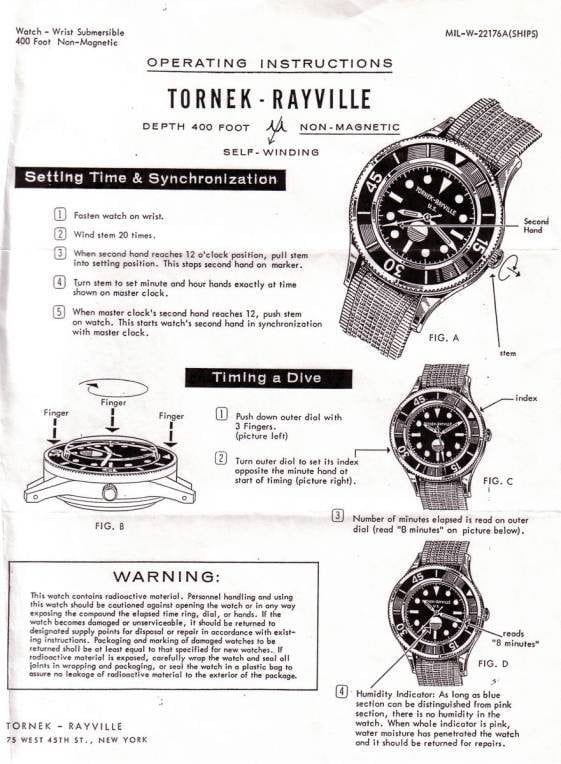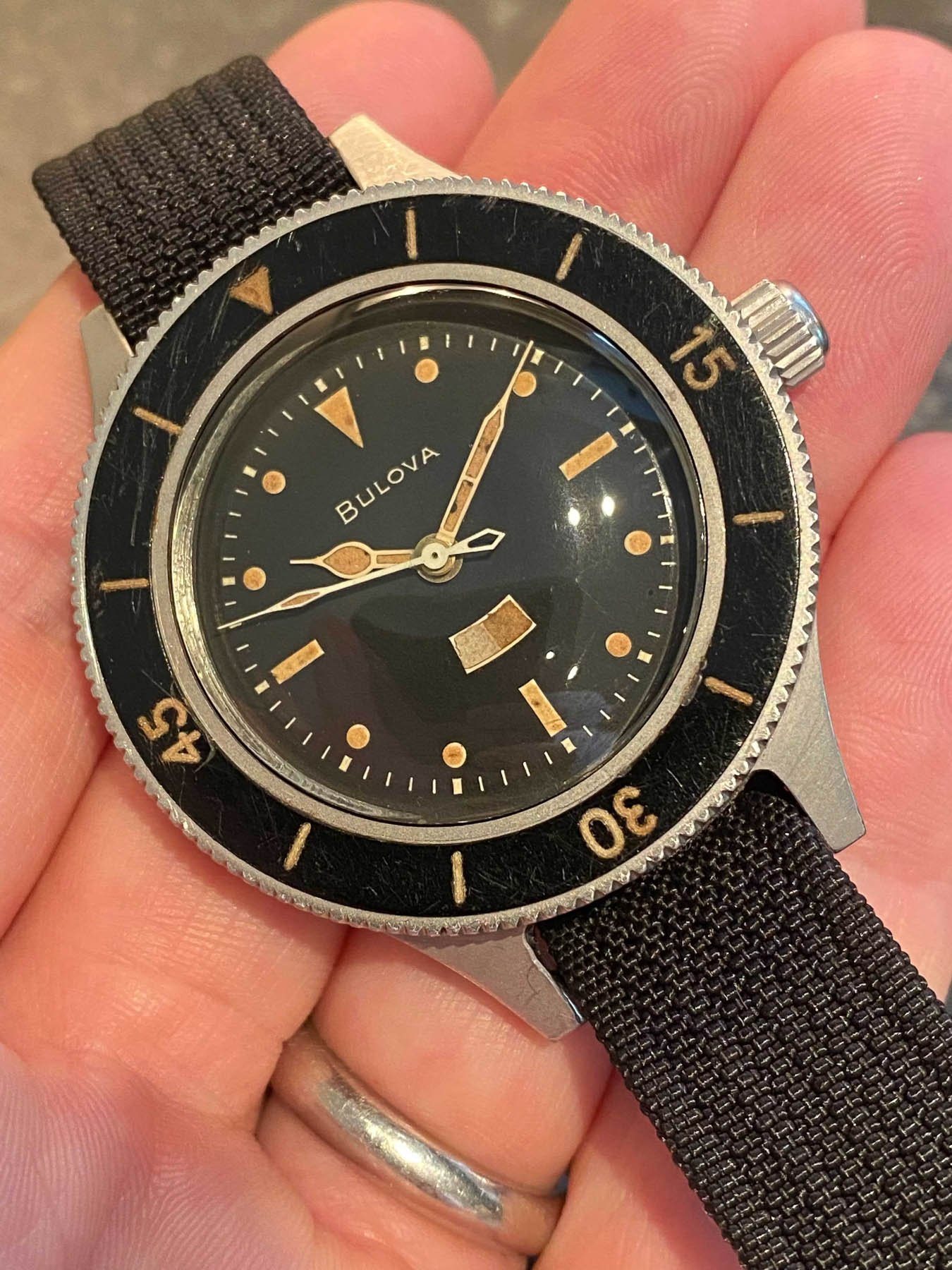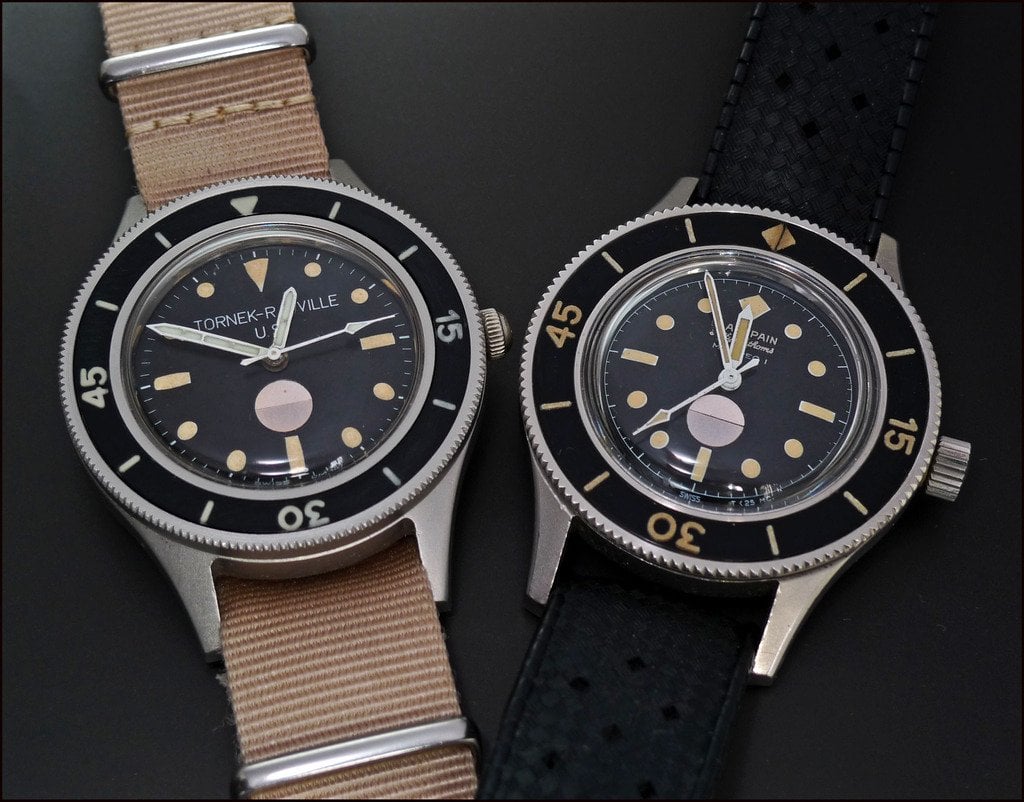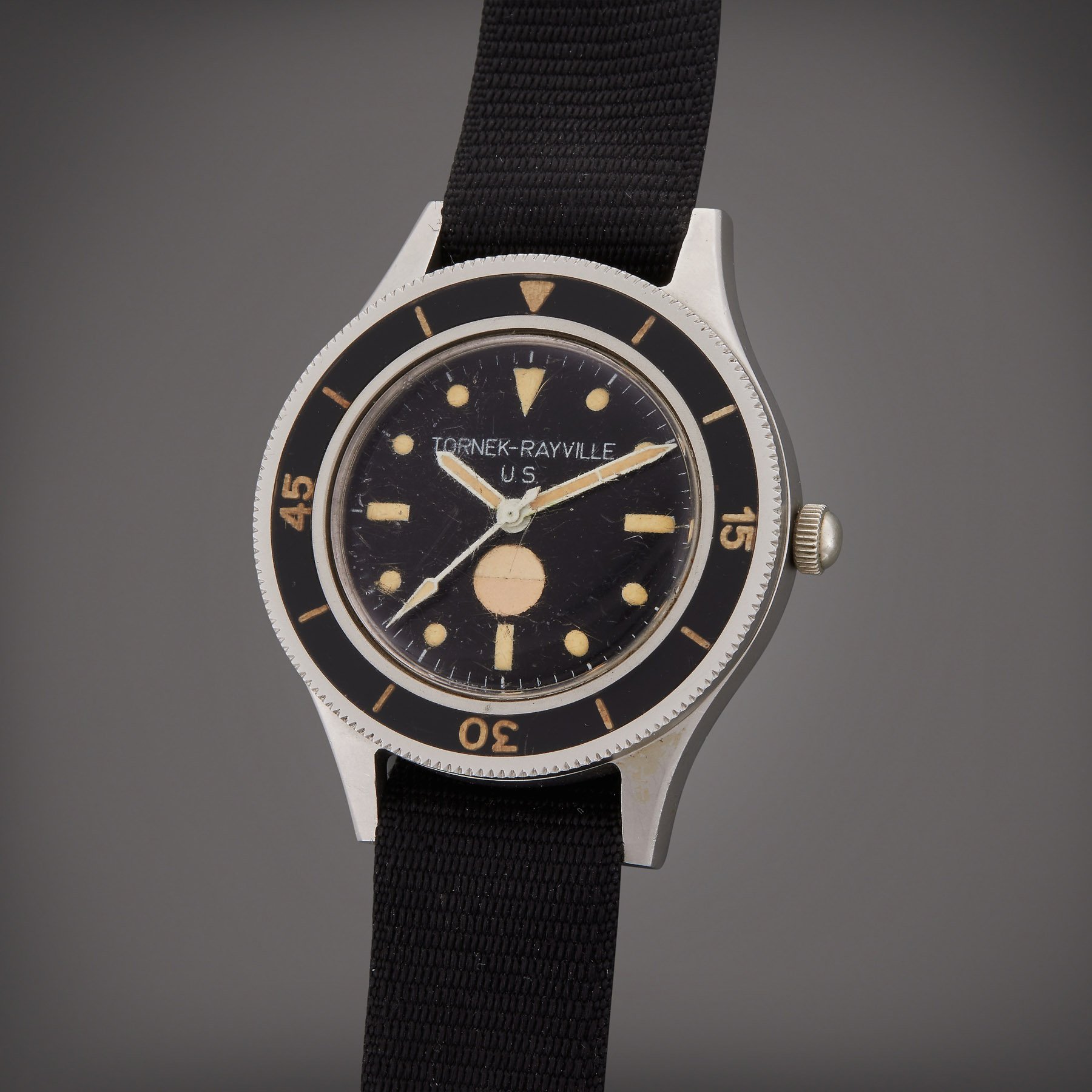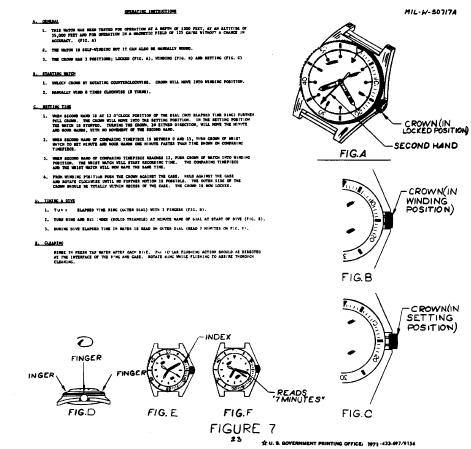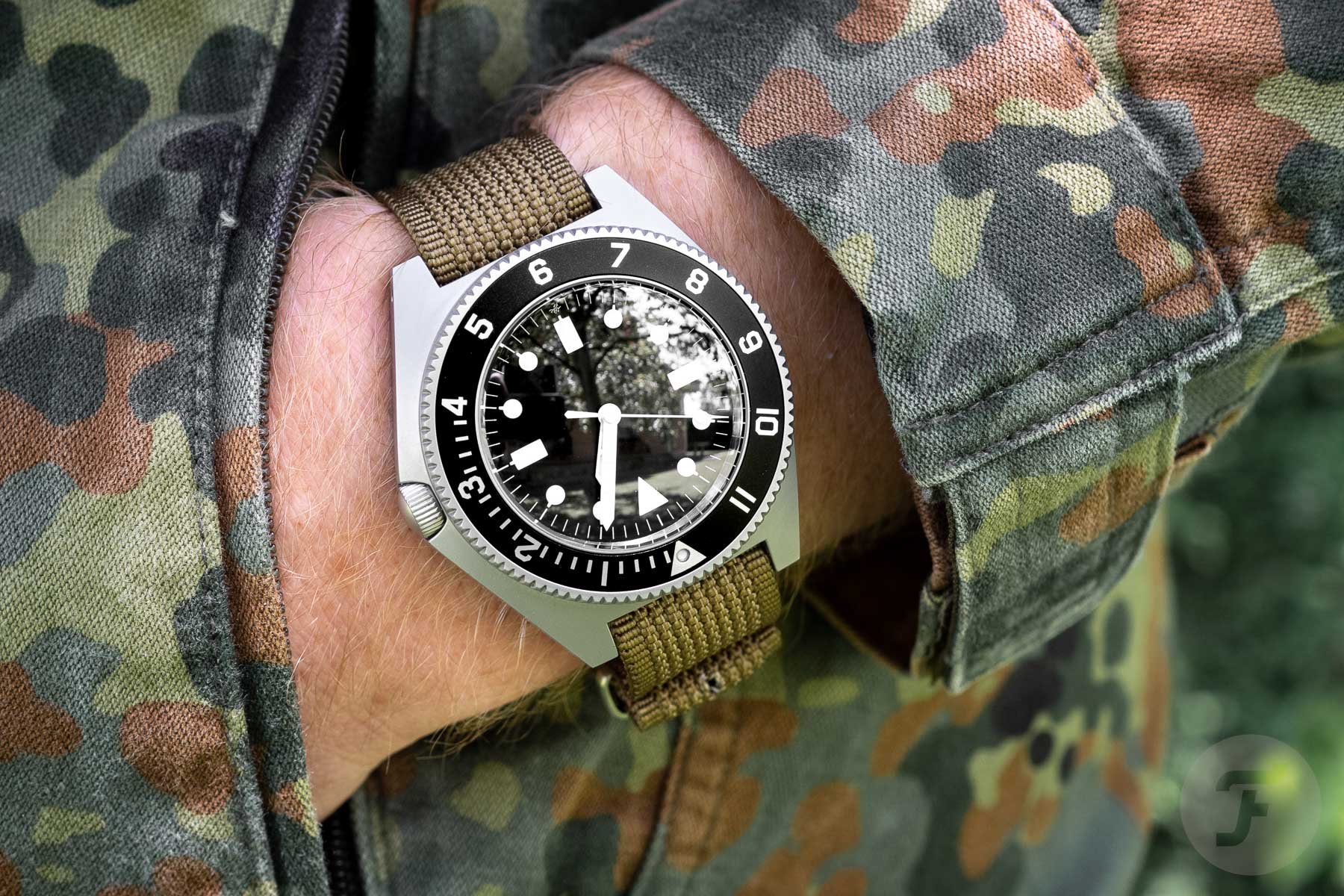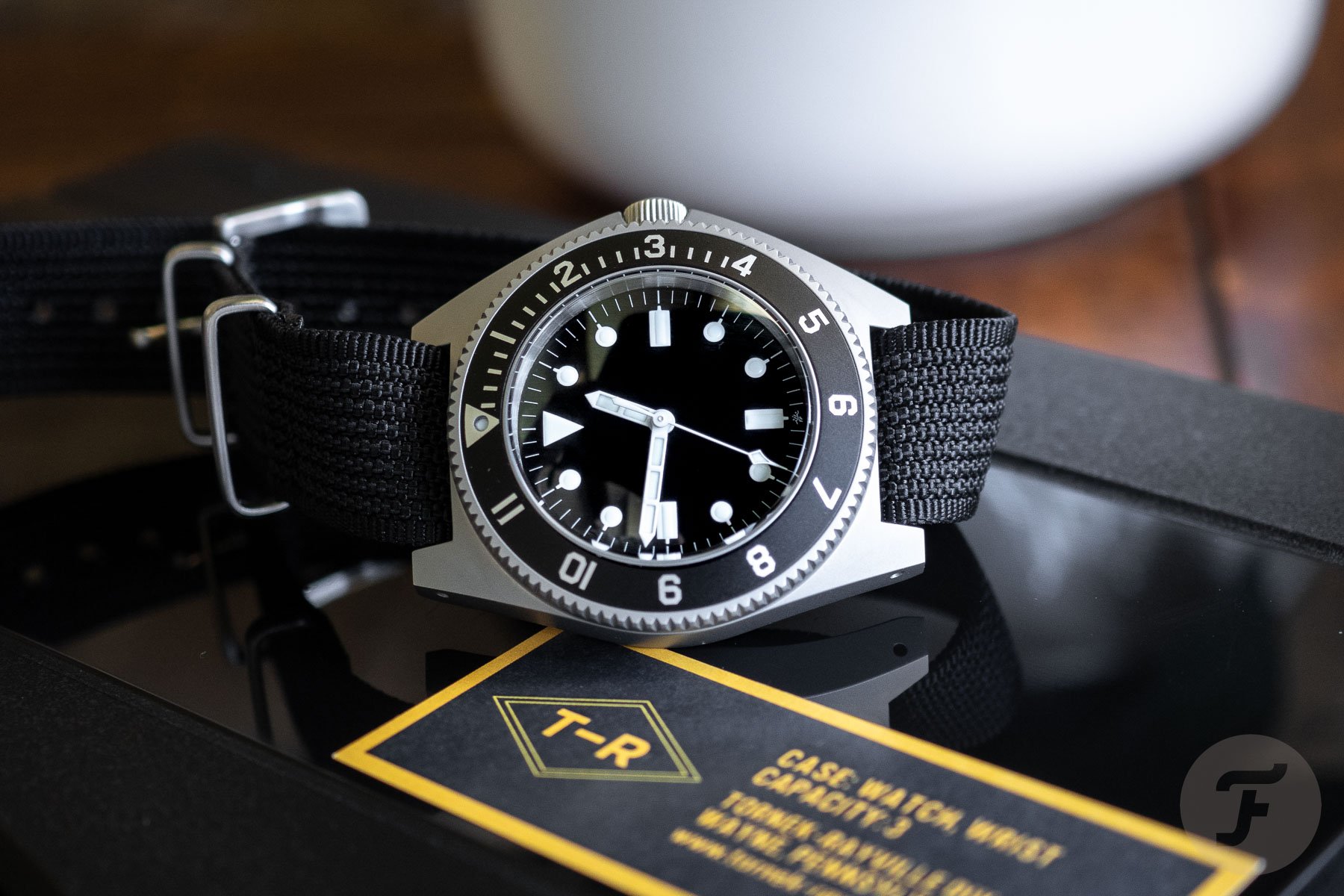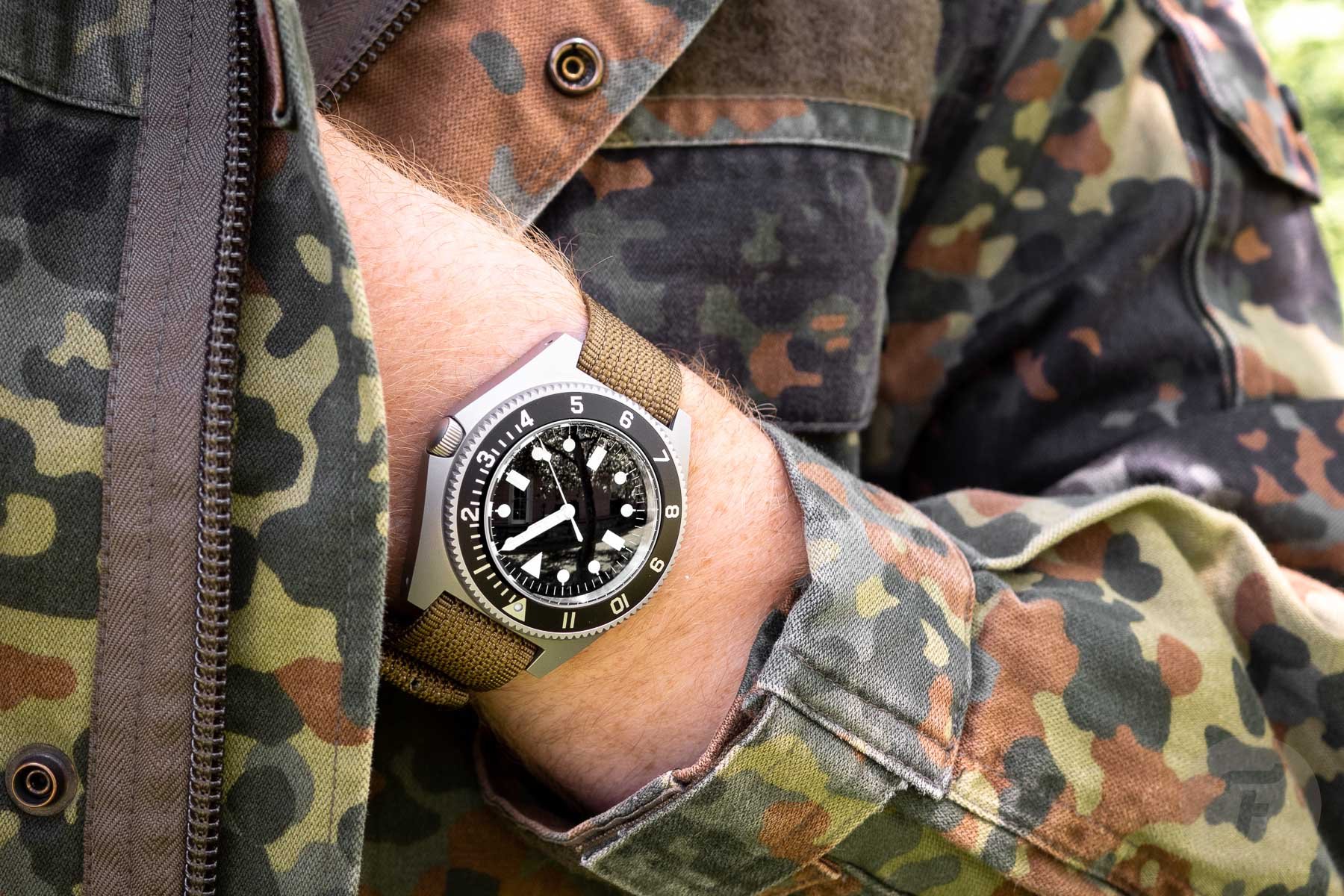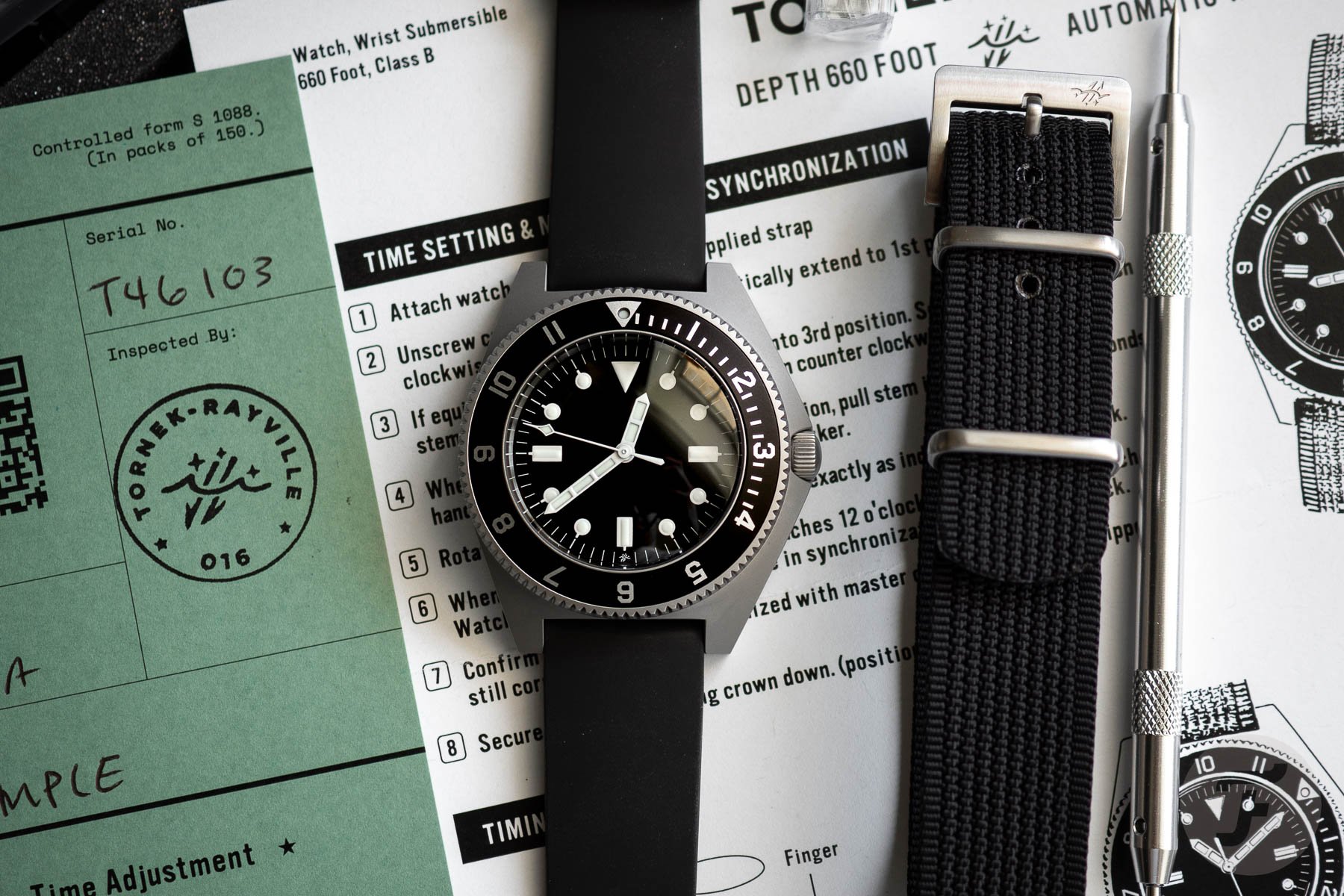Hands-On: The Tornek-Rayville Paradive G3 Type I TR-50717
If you’ve been into watches for a while now, you’ve likely come across the Tornek-Rayville name. The brand behind the Tornek-Rayville Paradive, which I’ll be reviewing today, has a brief but fascinating history in the world of military watches. But it won’t be just the name that rings a bell. Looking at the watch in question, you’ll likely recognize its asymmetrical case, sterile dial, no-nonsense appearance, and 12-hour bezel. This is because the Tornek-Rayville Paradive is a watch inspired by the mil-spec watches of the 1970s, namely, the MIL-W-50717 Type I specification. But as much as the past inspires its looks, the Paradive also looks to improve on the form factor of the toughest of watches.
This is the first Tornek-Rayville watch feature on Fratello, so giving a proper introduction is only fitting. Before jumping into the hands-on review, we must make time for a brief history lesson. The first is on the origins of the Tornek-Rayville brand, and the second is on the MIL-W-50717 spec watch that inspires the Paradive. So fill your tanks, strap your combat boots on, check your parachute, and find out what makes the Tornek-Rayville brand and the Paradive model so special.
Tornek-Rayville — a brief brand history
Toward the end of the 1950s, the U.S. Navy’s Experimental Diving Unit (NEDU) tested a handful of dive watches to determine their suitability for underwater demolition teams, later known as the Navy SEALs. The Navy had provided specifications to Bulova for manufacturing a “standard USN watch,” but NEDU also wanted to assess the performance of commercially available dive watches. The watches tested were the Rolex Submariner, Enicar Sea Pearl 600, and Blancpain Fifty Fathoms.
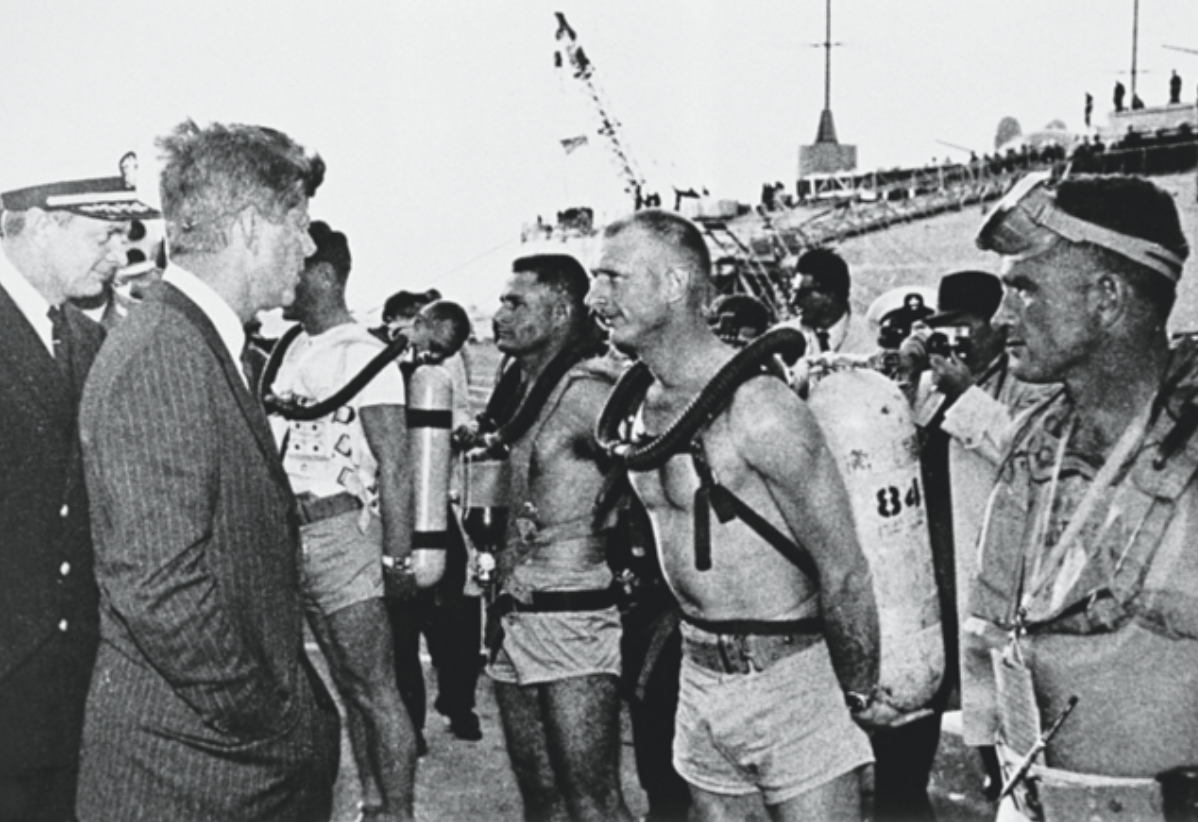
President Kennedy visiting Seal Team 2 in 1962
The rigorous tests performed by NEDU were comparable in intensity to those conducted by NASA on the Speedmaster. The watches were subjected to drops and extreme temperatures, dragged along riverbeds, and worn by divers at depths of up to 60 meters. The resulting test report concluded that only the Blancpain Fifty Fathoms met all the criteria and passed with flying colors. It was recommended for use by divers until the Bulova watch was ready.
However, when the Bulova USN watch was evaluated the following year, two out of the three watches had bezel issues, and one stopped running altogether. Once again, the Blancpain Fifty Fathoms successfully passed the tests. Not only did it meet the criteria, but at $55, it was also more affordable than the Rolex Submariner (which had a price of €95). However, the Navy faced a challenge due to the Buy American Act, which prioritized American military suppliers. This meant that however fit the Blancpain watch was for the task, it could not qualify due to its Swiss origins. But it didn’t take long for a loophole to emerge.
Gone, but not forever
Allen V. Tornek, a watch importer, proposed a solution to overcome this obstacle. He convinced Blancpain to add “Tornek-Rayville U.S.” to the dial and to have these watches sold through his (American) company. This allowed the Navy to acquire the desired watch, and the Navy SEALs, established in 1962, were issued these Fifty Fathoms watches under the Tornek disguise. The “Rayville” part of the name comes from an Americanization of “Villeret,” the name of the Swiss municipality where Blancpain was founded in 1735. The watch issued to the U.S. Navy was known as the Tornek-Rayville TR-900 (pictured below). Few were made, and even fewer survived their service and the passing decades. Today, the watch remains a collector’s holy grail and a true rarity for the few who know.
Sadly, Tornek-Rayville did not stick around for long. In the late 1960s, with budget constraints and the impending war in Vietnam, the U.S. military did not place any future orders for Tornek-Rayville watches, and thus, the brand went into a long slumber. Its watches saw plenty of action, with most lost or destroyed in the field. This is why any vintage examples that pop up today (such as the one pictured above that sold at Sotheby’s for just under $120,000) are as rare as they are desirable. But the brand eventually returned when Bill Yao, the founder of the Mk II watch brand, revived the Tornek-Rayville name. Known for its high-quality military-inspired pieces, Mk II was the ideal candidate to carry on the Tornek-Rayville legacy.
Military heritage
At first glance, the Tornek-Rayville Paradive may look somewhat familiar. This is because it’s inspired by the MIL-W-50717 specification for military-issued wristwatches from the early ’70s. To better understand military-issued watches, it’s essential to understand the government procurement process. Rather than considering available options, the United States government specified detailed criteria for the desired product. In the ’60s and ’70s, American watch brands such as Benrus, Westclox, Hamilton, Timex, and more submitted proposals outlining how they would meet the Department of Defense (DoD) requirements and at what cost.
The companies that made successful proposals would then be contracted to produce these wristwatches. Fast-forward to the early 1970s, and the DoD introduced MIL-W-50717, a military specification outlining the design details required for a diving watch. Benrus secured the contract and presented the originals. These were known as the Type I and Type II watches. From 1972 to 1980, approximately 6,000 Type I watches and just over 10,000 Type II watches were produced and distributed to US military forces. Tornek-Rayville revisits the blueprint for these watches and adds some subtle, albeit crucial, improvements. These include a three-part case construction for better serviceability, a sapphire crystal, a more resilient single-piece crown stem, non-radioactive lume, and resilient yet replaceable 2.5mm spring bars instead of fixed bars. The watch’s size is also slightly more wearable as the originals measured a chunky 43mm × 16mm, but more on that soon.
The Tornek-Rayville Paradive
Still with me? Okay, good. Let’s take a closer look at the Tornek-Rayville Paradive. As mentioned, the watch is slightly smaller than the mil-spec timepieces that inspired it. Its bead-blasted 316L stainless steel case measures 41.25mm (measured at the bezel), is 15.54mm tall, and has a 49.50mm lug-to-lug. The watch weighs 98 grams without the strap and features a double-domed sapphire crystal with AR coating on the underside. The dial is matte black with classic markings in Arclite Super-LumiNova. Under the 6 o’clock marker, you’ll notice the brand’s logo subtly integrated. The laddered pencil hands feature the same lume as the tip of the seconds hand. This particular model features a deeply-knurled 120-click bezel with a 12-hour aluminum insert. The first 20 minutes are graduated, as you’d typically find on a dive watch, providing added functionality.
The crown and case back both screw down into the case, contributing to its 200m depth rating. Its lines are nice and sharp, with no surface other than the crystal and the brushed rehaut catching the light. True to its roots, the Paradive is a purposeful, no-nonsense timepiece. The movement inside is an automatic Seiko Instruments NE15B calibrated in three positions. It provides hacking and hand-winding capabilities along with a 50-hour power reserve. Despite the lack of a date window on the dial of this particular model, the caliber used still features a phantom date, meaning that the setting position is still there and that you’ll hear a click at midnight as it jumps over. In my experience, it kept good time, gaining only about +4 seconds per day over a week.
On the wrist
The folks at Tornek-Rayville were kind enough to send the watch over with two different strap options. The first is what the brand calls the Nytex Type I-M2. It’s a single-pass strap made of woven nylon with a ridged look. The second was the plain black rubber strap. These two options were great, both offering comfort and complementing the watch’s looks. I also tested the watch on a standard NATO strap, which made it feel somewhat top-heavy. I think single-pass or two-piece straps are the way to go with the Paradive. On my 17cm (6.7″) wrist, the watch wore well, not feeling overly large yet still giving you the presence you’d want from a military-inspired watch. I also found that, despite my preference for the standard dive-bezel scale, I could use the 12-hour scale just fine to time sub-60-minute tasks.
Now, let’s quickly talk about the kit you get with the watch. The Tornek-Rayville Paradive comes in a hard plastic box with two latches and a cut-out foam interior. Inside it, you’ll find the watch, an extra pair of 1.8mm spring bars (for use with the rubber strap), and a spring bar tool. Additionally, the watch comes with some fantastic paperwork inspired by what might have come with an actual military watch in the 1970s, offering some degree of immersion without feeling gimmicky. I also have to mention the case back, which is far better than that found on the comparable Benrus Type II that Thomas reviewed here. The text is nicely engraved, and the six oval-shaped notches for opening the back are a nice touch.
Final thoughts
There is an undeniable appeal to military watches. Whether you see their past as problematic, fascinating, or a little bit of both, they have certainly captivated the minds of collectors and enthusiasts alike. The Tornek-Rayville Paradive offers a worthy homage to the Type I mil-spec wristwatch, with some improvements made to the original design. It offers a lot of value at a reasonable US$949 (approximately €875), especially considering that the Benrus-branded alternative will set you back about €500 more. Overall, I enjoyed my time with the Paradive as well as diving into the history of both the Tornek-Rayville brand and the watches that inspired this particular model. For more information, please check out the Tornek-Rayville website.
What do you think of the Paradive? Do you like its classic mil-spec looks at a more wearable size? Or is it still a bit too beefy for you? Let me know your thoughts in the comments section below.

